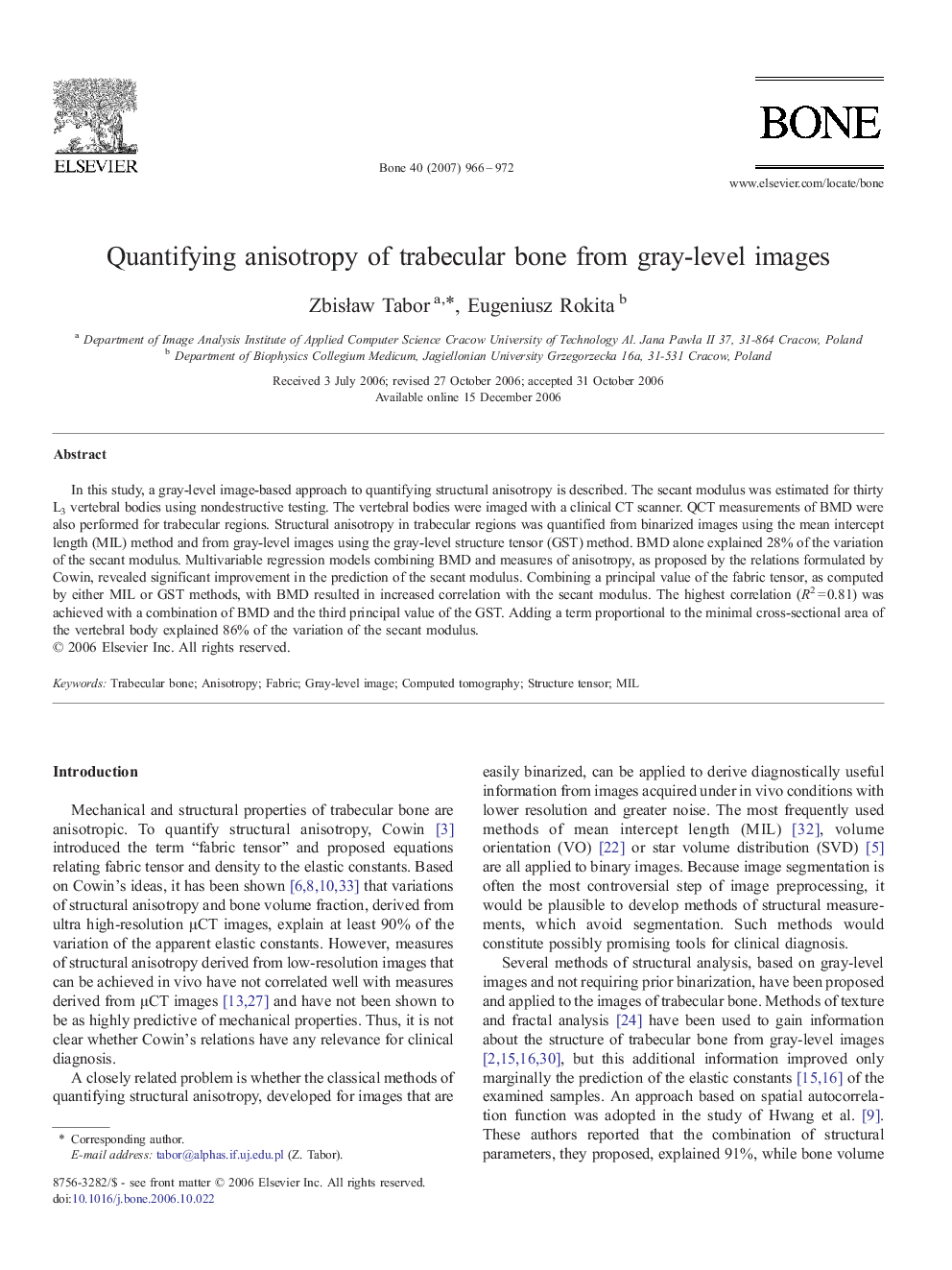| Article ID | Journal | Published Year | Pages | File Type |
|---|---|---|---|---|
| 2782136 | Bone | 2007 | 7 Pages |
In this study, a gray-level image-based approach to quantifying structural anisotropy is described. The secant modulus was estimated for thirty L3 vertebral bodies using nondestructive testing. The vertebral bodies were imaged with a clinical CT scanner. QCT measurements of BMD were also performed for trabecular regions. Structural anisotropy in trabecular regions was quantified from binarized images using the mean intercept length (MIL) method and from gray-level images using the gray-level structure tensor (GST) method. BMD alone explained 28% of the variation of the secant modulus. Multivariable regression models combining BMD and measures of anisotropy, as proposed by the relations formulated by Cowin, revealed significant improvement in the prediction of the secant modulus. Combining a principal value of the fabric tensor, as computed by either MIL or GST methods, with BMD resulted in increased correlation with the secant modulus. The highest correlation (R2 = 0.81) was achieved with a combination of BMD and the third principal value of the GST. Adding a term proportional to the minimal cross-sectional area of the vertebral body explained 86% of the variation of the secant modulus.
